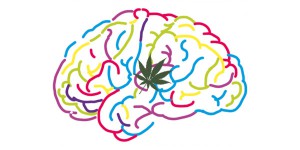The Spanish Society for Research on Cannabinoids (SEIC) held its 19th Annual Meeting, as usual in November, this time at the Universidad Francisco de Vitoria (Pozuelo de Alarcón, Madrid). The majority of participants were young researchers presenting the latest results of their studies, once again demonstrating the high scientific quality of Spanish research groups and, in particular, those working in the study of the Cannabinoids.
Following speeches from the University academic authorities, the inaugural lecture was given by Professor Mario Van der Stelt of the University of Leiden (Holland). Prof. Van der Stelt stressed the importance of having tools in the laboratory that enable knowledge of the molecular and cellular mechanisms of cannabinoid compounds, in order to assess the active mechanisms of new compounds with therapeutic utility and minimize the risks or potential side effects of these compounds in clinical trials. During his lecture he explained how after the failed clinical trial carried out in France in 2016 with the FAAH inhibitor, BIA-2474, using techniques developed in his laboratory, they concluded that the compound used is not only capable of joining the FAAH enzyme but also other cell targets and also inhibiting proteins involved in neuronal metabolism that might explain the results of that clinical trial.

Once the meeting was opened, the first oral session focused on the neuroprotective role of the Cannabinoid System. During this session, new applications in the treatment of neurodegenerative diseases of cannabinoid compounds, such as VCE-003.2, which has a demonstrable effect on neurogenesis in vivo and in vitro models and new combinations of phytocannabinoids that might be useful in the treatment of pathologies such as Parkinson's were discussed. Both CB1 and CB2 receptors and the FAAH enzyme are involved in the symptoms and cellular mechanisms that cause neurodegenerative diseases. On the one hand, it was explained how the CB2 receptor is involved in the response to neuropathic pain and inflammatory mechanisms. On the other hand, the CB1 receptor was related to alterations in cognitive and memory processes, and it was demonstrated how the FAAH enzyme seems to play an important role in synaptic plasticity processes in an animal model of Alzheimer's disease.
The central theme of the second oral communication session was the psychiatric effects of cannabinoids and signaling mechanisms. Treatment with antidepressants was discussed and how these treatments affect alcohol consumption patterns and the expression of Endogenous Cannabinoid System (SCE) elements. Moreover, the authors propose that each antidepressant therapy might have a specific pattern of SCE alteration that should be taken into account in the treatment of alcoholic patients. The topic of long-term consequences or effects of cannabis use during adolescence was also discussed and the search for markers or evidence that might predict such consequences in the long term. In this sense it seems that the administration of THC in young animals leads to alterations at a cereberal level when imaging techniques such as PET are performed that might help predict functional alterations.
In recent years, intensive work is being done in the field of cannabinoid signaling, especially in the study of the interaction between cannabinoid receptors with different proteins or in the possible formation of heterodimers. During this session, papers demonstrating the interaction of the CB1 receptor and the GRP78 endoplasmic reticulum chaperone were presented. It has also been demonstrated that the interaction of CB1 with the GAP-43 protein is involved in axonal plasticity and growth among other functions. The interaction of CB1 with these proteins could be the key to understanding the molecular mechanism underlying the activation of this receptor and thus better understanding the functioning of SCE. On the other hand, the formation of heterodyemers between the CB2 receptor and the orphan GPR18 receptor could play an important role in neurodegenerative pathologies involving inflammatory processes, such as Alzheimer's, modulating the response of microglia cells.
During the third session a series of communications on neonatal pathologies were presented. In some talks, the protective potential of cannabidiol (CBD) was demonstrated in animal pathological models such as intraventricular hemorrhage or meconium aspiration. CBD reduces lung damage, brain injury inflammation volume, demyelination and produces functional improvement in animals. In these studies, the CBD action mechanism was further elaborated, specifically in a model of neonatal hypoxia-ischemia, in which the involvement of the CB2 receptor specifically in the anti-inflammatory effect of CBD is manifested, suggesting the existence of CB2-5HT1A heterodymers. On the other hand, results were presented on the effect of THC on the myelinization processes that take place during the postnatal stage. THC accelerates and favors the differentiation of oligodendrocytes progenitors so it could be useful in the treatment of demyelinating pathologies.

On the second day of the Meeting, the Hot Topic was presented. Implemented two years ago, this received a warm reception from the members registered in the meeting. The activity consists of an expert, related to cannabinoid research, making an updated review on a current topic. On this occasion we had an excellent review by Dr. Ester Aso (Universitat de Barcelona), who told us about the growing cannabis industry. The Doctor provided a rigorous and accurate vision of the profound changes that this world is undergoing due mainly to recent legislative changes in developed countries and advances in the medical use of cannabinoids. While allowing us to get an idea of the immense growth of economic investments made in this regard, she drew attention to the risks associated with them.
After the Hot Topic, the day continued as normal and the final sessions were held on the peripheral effects of cannabinoids on cancer. A wide variety of works regarding the peripheral effects of cannabinoids was presented, on themes ranging from the possible therapeutic application of THC in the treatment of endometriosis, reducing lesions observed in animal models and modifying sensitivity and pain to the effect of treatment with CBD of keratinocyte cultures from patients, in which an alteration in the expression of genes involved in extracellular matrix remodeling, cell differentiation and oxidative stress was observed. It was also suggested that the topical application of CBD might be useful in skin pathologies such as psoriasis and atopic dermatitis.
The mechanisms underlying appetite control, obesity and cannabinoid-mediated thermogenesis occupied a large part of the oral communications of this session. The existence of heterodimers among both CB1 and CB2 cannabinoid receptors, with the ghrelin receptor, a neuropeptide involved in the control of intake and which appears altered in obese people was demonstrated. Continuing with the study of the role of cannabinoids in obesity, high levels of endocannabinoids have been found in animals subjected to a high-fat diet, both at the central level in the hypothalamus and in peripheral blood in the short term; moreover, these increases appear more evident in females than in males. Interestingly, results were presented relating the consumption of a high fat diet with thermogenesis markers and the alteration of endocannabinoid levels, which allowed the authors to hypothesize that endocannabinoids in the hypothalamus may be modulating thermogenic mechanisms in the short term in obese animals. Moreover, the administration of THCVA produces a decrease in body weight and fat gain in the same animal model and even reduces insulin resistance, inflammation in adipose tissue and the liver steatosis that usually appears associated with obesity problems.
At the end of the session, the most recent advances in cancer and cannabinoids research were presented. This included a work related to the study of molecular mechanisms on the one hand, related to the antitumoral effect of THC, mainly aimed at the study of lipid signaling cascades that launch autophagy mechanisms in glioma cells and, on the other hand, the importance of detecting and describing the presence of heterodyemers between cannabinoid receptors, in particular CB2, and receptors already used as tumor markers such as the HER2 marker. A study comparing efficacy in cell and animal models of breast cancer between treatment with pure THC or treatment with a botanical extract from the plant was also presented. The results indicate that the use of the extract would have a greater antitumoral effect and suggest the possibility of its combination with the usual treatments for breast cancer.
In addition to the communications presented, in both oral and poster format, the meeting was marked on this occasion by two events of special importance for the SEIC. First, the Professor and former president of the SEIC, Javier Fernández Ruiz (Complutense University of Madrid), presented the special issue of the journal Biochemical Pharmacology, which was published in November and in which many members of the SEIC participated. The other important and most emotional event was the tribute paid to the Professor and also former president of the SEIC, José Antonio Ramos Atance, on the occasion of his retirement. Various research colleagues participated in the tribute, expressing the public recognition of the SEIC both at the scientific and the personal level.
Once again, the Annual Meeting of the SEIC ended with the awards for the best annual publications by SEIC partners and the awards for the best communications in both poster and oral communication format. We look forward to the 20th Annual Meeting to be held in November 2019 in Barcelona as SEIC grows every year, not only in numbers but also in the training of high-quality researchers.


